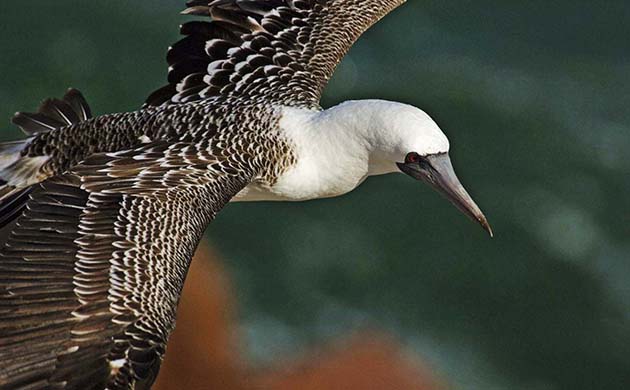
Watching Humboldt seabirds on the cold waters off the coast of South America, I noticed that of them dive for their fish/food. Small birds will take shallow dives with little or no head start (terns and some gulls) whereas other will take impressive head starts for deeper dives and generally larger fish. Peruvian boobies were, without a doubt, the plunging champions featuring long head starts and insanely fast plunges into the Pacific Ocean.
When I was a young boy, I was fascinated to see Peruvian Boobies (Sula variegata) plunge into the water at speeds I thought were insane. I tried to mimic this action at my local swimming pool, to see what was like plunging into the water head first. Several attempts gave me a head ache and popping noises in my ear, indicating water had gotten into my ears and nose. I ended up jumping on one leg with a tilted head to eliminate the water of my ears, otherwise I’d risk getting a ear infection.
Unlike an ill equipped diver like me, Boobies have adaptations for a plunge-diving lifestyle: forward-facing eyes and streamlined heads and body. Their nostrils have no external openings to prevent water from being forced into their airways when they dive into the water, so Boobies must breathe through their mouth.They spot their prey before they dive, using a sharp vision to correct the distortion of objects under water.
Plunge-diving can be done from heights of 10–30.5 m (33–100 ft) and even up to 100 m (330 ft). These birds develop speeds of around 97 km/h (60 mph).
Their wings fold back along the body just before the moment of impact, and the force is absorbed by air sacs under their skin.
Their skulls contain special air sacs that protect the brain from enormous impact and water pressure. They can go to depths of 25 m (82 ft) below the water surface using webbed feet in all four toes, enabling them to efficiently propel themselves through the water and control their direction.
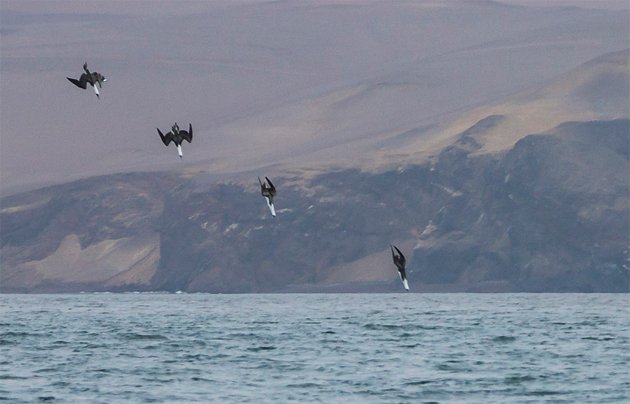
Seeing this amazing feat by these Boobies makes me think of Piliated Woodpeckers, which generate such loud sound by hammering their bills against a tree trunk. Both boobies and woodpeckers are fascinating for what they can do; and while I wanted to find out what was like diving like a booby, I am not as interested in finding out what’s like banging my head against a tree trunk to generate a sound signal.
Photos: Courtesy of Miguel Moran.
Featured Photo: Walter Wust.


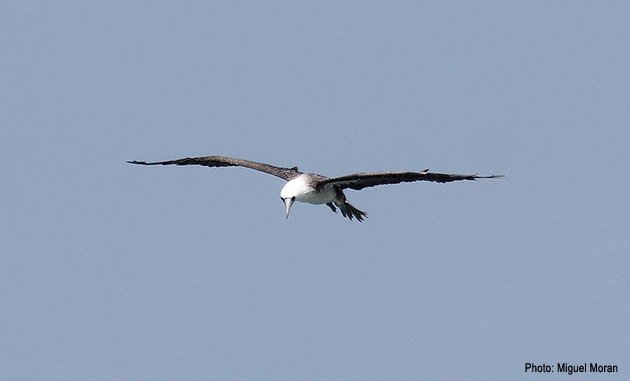
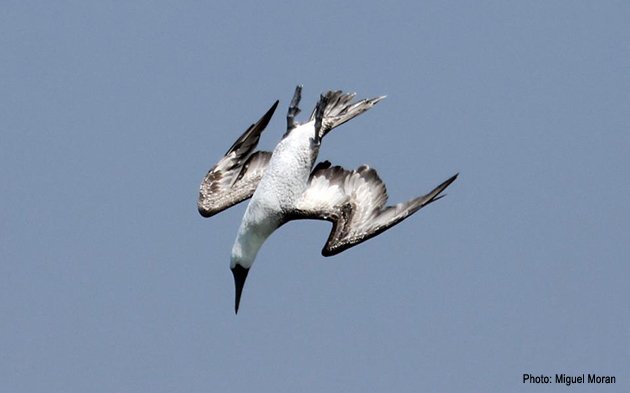
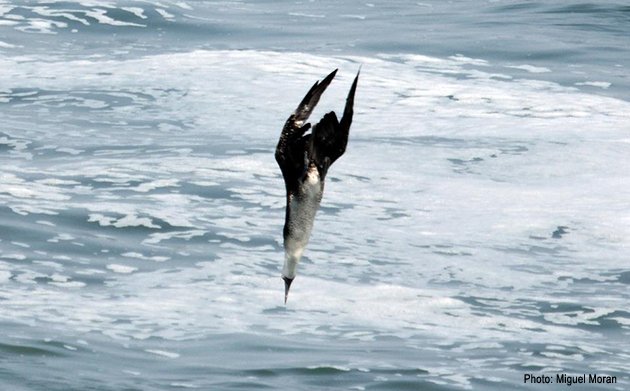
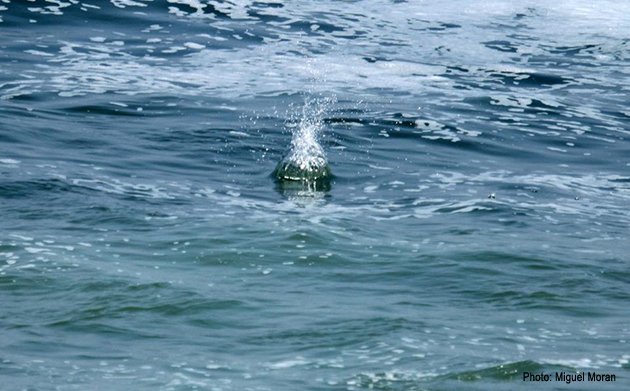











Those are fabulous photos, and I love seeing the whole sequence. Thank you for a great post!
Thank you Wendy. The photographers that allowed use of their photos for this post are really good.